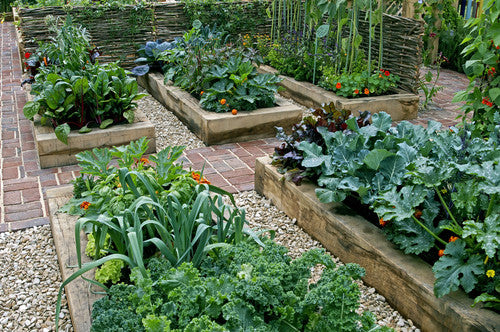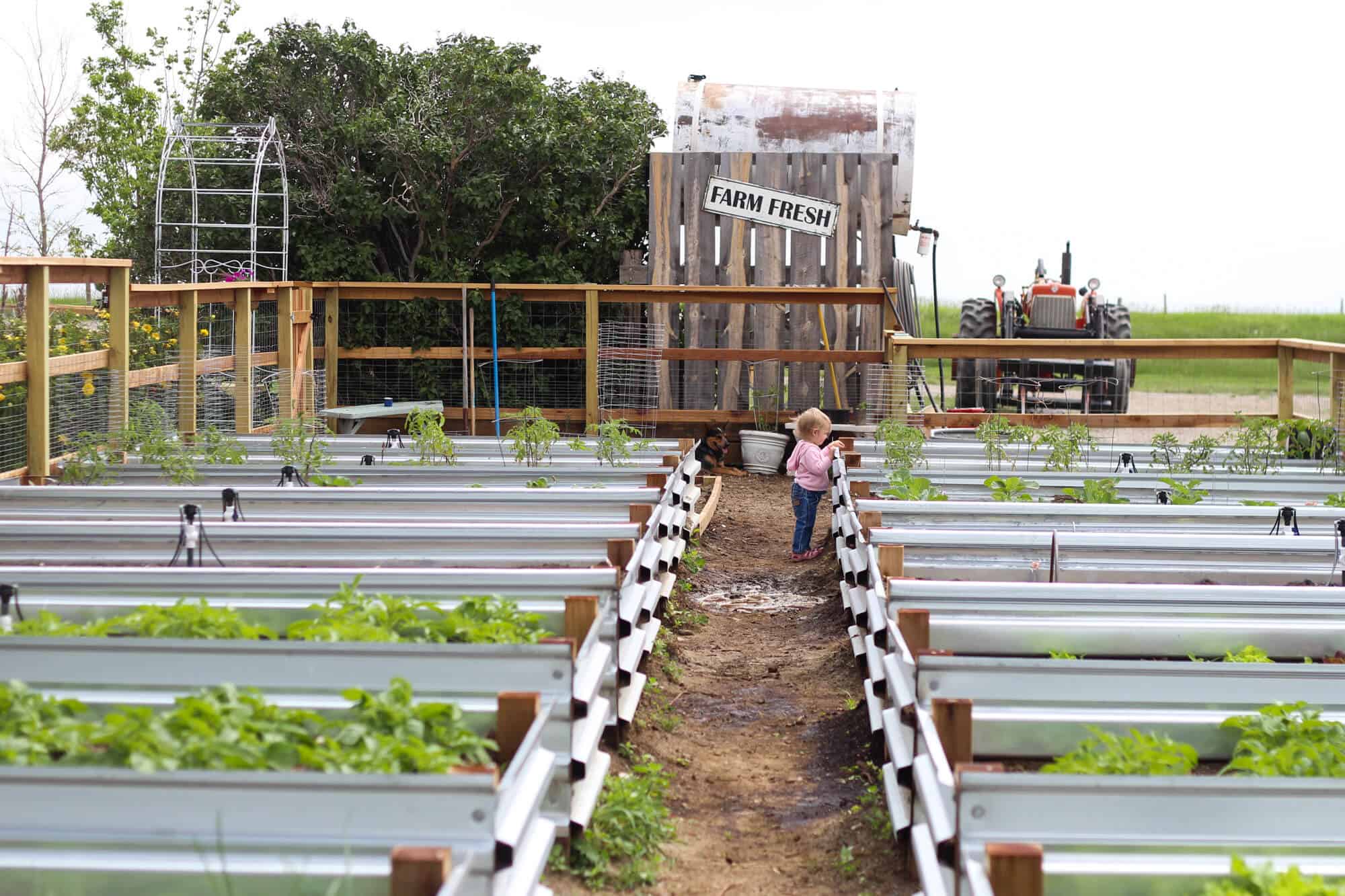Common Mistakes to Avoid in Homestead Gardening
Common Mistakes to Avoid in Homestead Gardening
Blog Article
Learn How to Cultivate a Growing Horticulture Atmosphere for All Skill Levels
Producing a prospering garden is a multifaceted endeavor that can be embraced by people at any kind of ability level. By taking a look at vital parts such as dirt health, ideal plant option, and seasonal care regimens, one can create a sustainable horticulture practice that generates rewarding outcomes. Recognizing exactly how to analyze and enhance your yard space lays the foundation for success. Yet, the intricacies of implementing these principles commonly existing challenges that can deter even the most passionate newbie. What approaches can be utilized to conquer these barriers and foster an absolutely flourishing environment?
Understanding Your Garden Space
In the realm of horticulture, comprehending your garden room is vital to cultivating a flourishing landscape (Homestead Gardening). The initial step in this endeavor entails examining the particular qualities of your story. Elements such as soil structure, sunshine direct exposure, and water drainage play critical roles in figuring out the suitability of your garden for different types of plants
Begin by carrying out a dirt examination to assess pH levels and vitamins and mineral material, which will certainly educate any needed modifications. In addition, observe just how much sunlight your space receives throughout the day. Various plants have varying light needs; some thrive in full sunlight, while others favor complete or partial color.

Last but not least, assess the available space and plan as necessary. This consists of taking into consideration plant heights and infected guarantee ample room for development without congestion. By obtaining an extensive understanding of your yard area, you set the structure for an effective gardening experience.
Selecting the Right Plants
Picking the right plants for your yard calls for mindful consideration of numerous aspects, including climate, soil conditions, and individual preferences. Begin by evaluating your local climate, as specific plants thrive in certain temperature varieties and climate patterns. Tropical plants may not endure in chillier areas, while sturdy perennials can withstand severe wintertimes.

Consider your individual choices, including aesthetic appeal and upkeep levels. Determine whether you like vivid blossoms, lavish vegetation, or edible plants. Furthermore, consider the moment and effort you want to purchase plant treatment, as some ranges require even more attention than others.
Finally, think of the yard's layout and light direct exposure. Sunlight patterns throughout the day will influence your choices-- some plants require complete sun, while others thrive in color. By thoughtfully evaluating these elements, you can produce a unified and efficient yard customized to your atmosphere and preferences.
Crucial Horticulture Tools
A well-appointed gardener can dramatically improve their horticulture experience and outcomes. Essential gardening devices are basic to growing a successful yard, despite skill degree. A durable spade is invaluable for digging and turning dirt, while a trowel allows for exact growing and hair transplanting of smaller sized plants.
Trimming shears are vital for keeping plant health by removing thick or dead branches, advertising much better air flow and development. In addition, a hand rake works for removing particles and aerating the dirt, ensuring ideal conditions for plant roots.
Gardening gloves shield hands from thorns, chemicals, and sores, making them an essential accessory. A watering can or hose with a flexible nozzle makes sure that plants obtain appropriate moisture without overwatering.
Lastly, think about purchasing a strong wheelbarrow for carrying dirt, plants, and tools around the garden effectively. By constructing a quality toolkit that includes these essential products, gardeners can deal with various tasks with confidence and simplicity, paving the way for a prospering horticulture environment. Remember, the right devices not only enhance efficiency however also boost the total enjoyment of the horticulture procedure.
Dirt Preparation and Maintenance
Quality dirt is the structure of a successful garden, making appropriate prep work and upkeep critical for healthy plant growth. The initial step in soil preparation includes evaluating its pH and nutrient levels. This can be attained through dirt testing kits offered at gardening facilities or through expert solutions. Based upon the examination results, modifications can be made to maximize dirt conditions for specific plant demands.
Including natural matter, such as garden compost or well-rotted manure, is necessary for enhancing soil structure and fertility. This not just improves vitamins and mineral accessibility however also promotes beneficial microbial activity. Furthermore, appropriate drainage is essential; hefty clay dirts might require the enhancement of sand or perlite to enhance oygenation.
Regular maintenance of dirt health consists of mulching, which conserves wetness and subdues weeds. Turning crops yearly assists prevent nutrient depletion and minimizes insect and illness threats. It is additionally vital to stay clear of over-tilling, which can interfere with dirt framework and damage advantageous organisms.
Ultimately, a regular dedication to dirt prep work and upkeep will result in a prospering yard, making certain that plants receive the essential nutrients they need for robust development and productivity.
Seasonal Treatment and Monitoring

In spring, concentrate on growing new seeds and seed startings, while also conducting soil tests to amend nutrient deficiencies. Routinely check for parasites and illness, as these can proliferate with the warming climate. Summer needs regular watering and mulching to retain dampness, in addition to pruning for far better air circulation.
As autumn techniques, it's time to prepare the garden for inactivity. This includes collecting plants, tidying up debris, and applying a layer of compost to protect plant roots from frost. Think about planting cover plants to enhance the dirt throughout the winter season months.
Finally, wintertime treatment is crucial. Examine structures like greenhouses for damages and make sure correct insulation for delicate plants. Frequently keep track of for insects that may seek sanctuary inside your home. By adapting your gardening look what i found methods to the seasonal cycles, you can cultivate a flourishing environment that sustains plant health year-round.
Conclusion
In conclusion, cultivating an effective yard calls for a detailed understanding of important principles such as soil composition, sunlight direct exposure, and ideal plant selection. Normal seasonal treatment and monitoring practices additionally improve plant health and efficiency.
Picking the right plants for your garden requires cautious consideration of various elements, including climate, soil problems, and personal preferences. Conduct a soil examination to determine pH degrees and vitamins and mineral material, which read this article will guide you in choosing plants that will certainly thrive in your yard.Lastly, consider investing in a durable wheelbarrow for carrying soil, plants, and devices around the garden efficiently.Quality dirt is the foundation of an effective garden, making appropriate prep work and upkeep important for healthy plant growth. Homestead Gardening.In conclusion, cultivating an effective yard calls for a thorough understanding of crucial concepts such as soil composition, sunlight exposure, and proper plant selection
Report this page